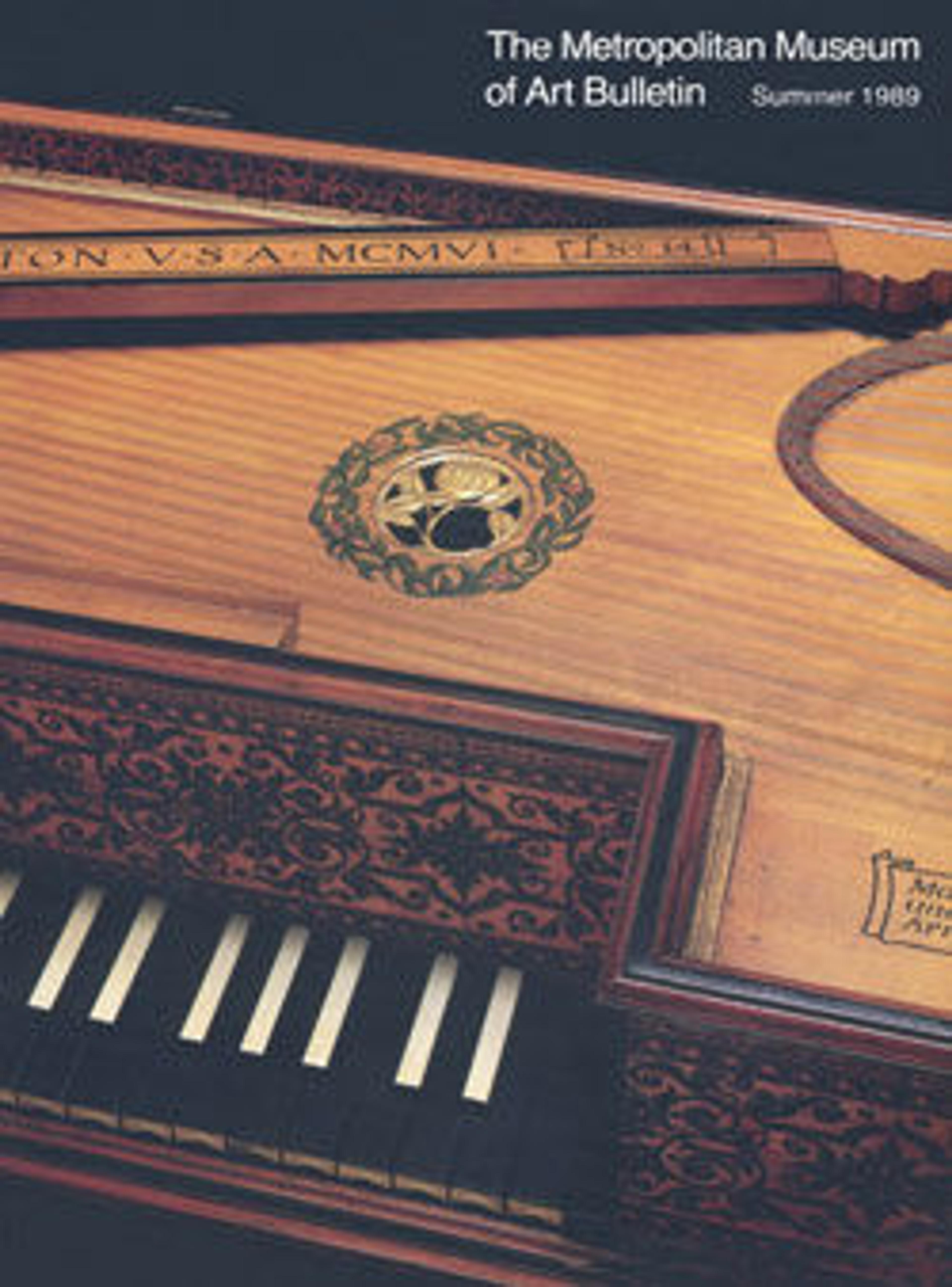Folding Harpsichord
A rare form of a small harpsichord, the folding harpsichord was made to sit on a table. It has a removable keyboard as well as a soundboard in three hinged sections that fold up. This instrument has a limited range of less than four octaves and a quiet sound, which would have been well suited for private music making.
Technical description: Folding harpsichord (Clavecin brise) is composed of one rectangular and two trapezoidal sections hinged together to fold into a rectangular box shape for travel; case and soundboard of cypress with a multi-layered parchment rose; c/e-c4, single manual, 2x4 inches, olivewood naturals, key fronts now missing, black-stained accidentals covered with rosewood plates, keys guided by pins between the rear of the levers; pearwood jacks with beech tongues, brass leaf springs, quill plectra.
Technical description: Folding harpsichord (Clavecin brise) is composed of one rectangular and two trapezoidal sections hinged together to fold into a rectangular box shape for travel; case and soundboard of cypress with a multi-layered parchment rose; c/e-c4, single manual, 2x4 inches, olivewood naturals, key fronts now missing, black-stained accidentals covered with rosewood plates, keys guided by pins between the rear of the levers; pearwood jacks with beech tongues, brass leaf springs, quill plectra.
Artwork Details
- Title: Folding Harpsichord
- Date: mid-18th century
- Geography: Italy
- Culture: Italian
- Medium: Cypress, iron, and various materials
- Dimensions: L.: 75.4 cm (29-3/4 in.); W.: 62.8 cm (24-3/4 in.)
- Classification: Chordophone-Zither-plucked-harpsichord
- Credit Line: Gift of The Chicago Historical Society, 1979
- Object Number: 1979.522.1
- Curatorial Department: Musical Instruments
More Artwork
Research Resources
The Met provides unparalleled resources for research and welcomes an international community of students and scholars. The Met's Open Access API is where creators and researchers can connect to the The Met collection. Open Access data and public domain images are available for unrestricted commercial and noncommercial use without permission or fee.
To request images under copyright and other restrictions, please use this Image Request form.
Feedback
We continue to research and examine historical and cultural context for objects in The Met collection. If you have comments or questions about this object record, please contact us using the form below. The Museum looks forward to receiving your comments.
